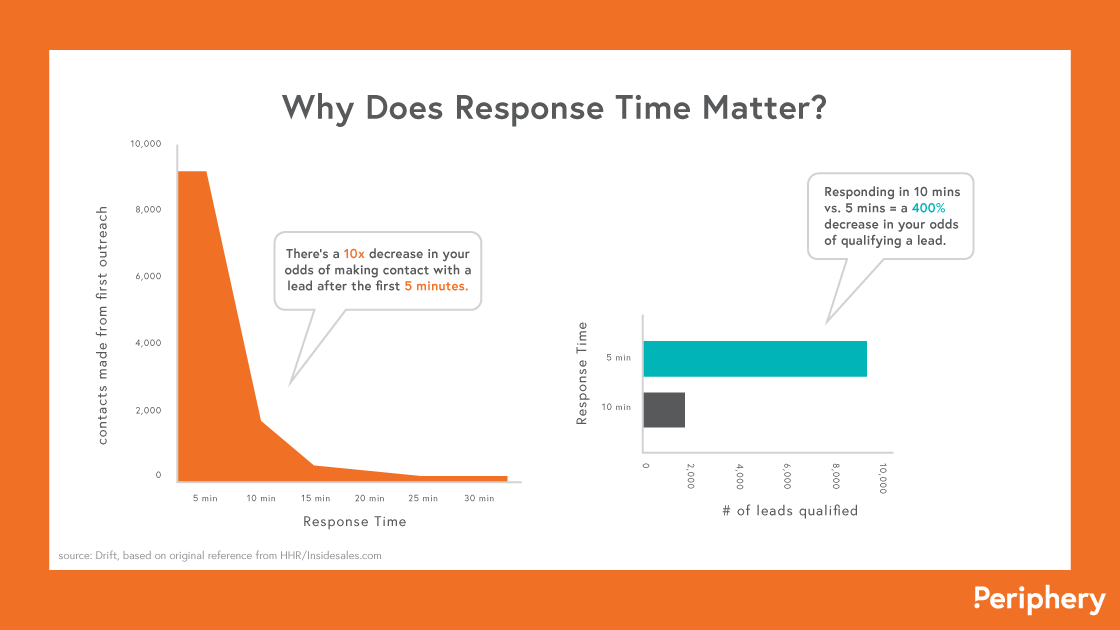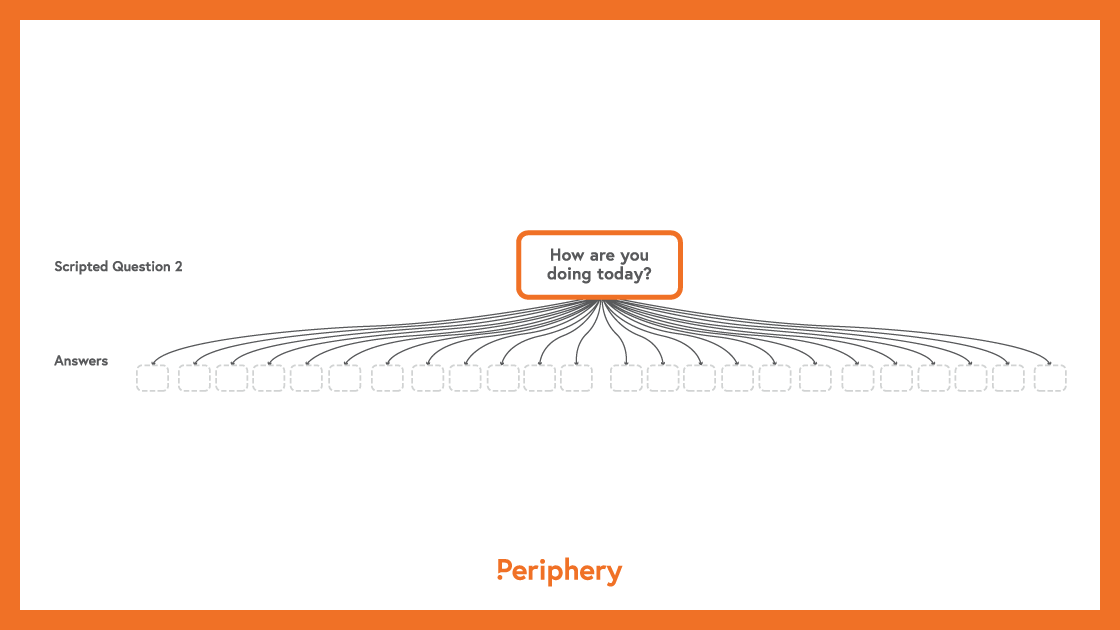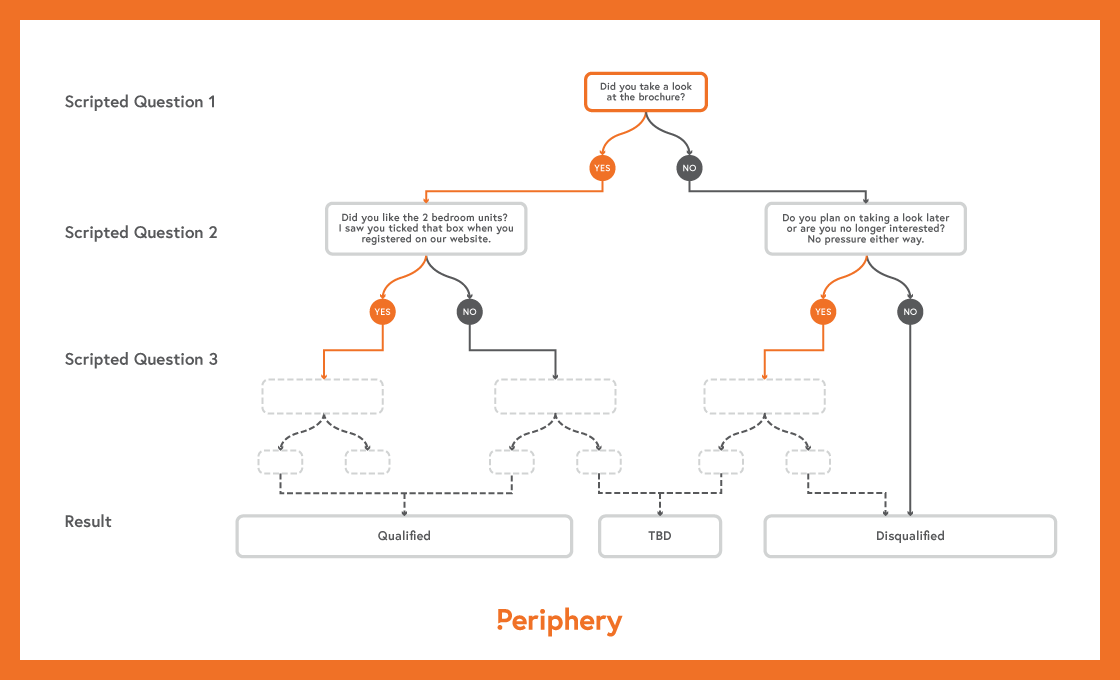There is an age-old argument among sales and marketing teams. A point of contention that’s both highly debated and turned into conflict. It’s all about one question: Who is responsible for making sure inbound leads are qualified, and what’s the best way to increase the ever-important lead qualification rate?
This article attempts to answer that question. In Drift’s case, it’s suggested that tactic #1 can increase the lead qualification rate by over 700%. Not bad. Periphery Digital has been working with marketing and sales teams for nearly five years, and this question has come up many times (and for good reason).
What Exactly is a Qualified Lead?
A qualified lead is a potential buyer of a product or service who meets the selling company’s preset criteria.
Every company has its own definition of a qualified lead, also sometimes known as a “qualified buyer.” Criteria can be anything from wanting the product, having the pain solved by the product, or simply being able to afford what you’re selling.
Companies conduct research to identify a target market and customer, and establish a “buyer profile” with the goal to clarify the criteria. This becomes a resource for salespeople and other members of the team.
An example of a qualification methodology is the acronym BANT, which stands for Budget, Authority, Need, and Time. Companies that use BANT clarify the following:
- Budget: Is the lead willing to spend this sum?
- Authority: Does the lead have the authority to make the decision?
- Need: Does the lead have pain your product can solve?
- Time: Does the lead have a timeline to make a decision?
Now that we’re clear on what it means for someone to progress from a lead to a qualified lead, let’s get into the three tactics to triple your lead qualification rate.
Reach Out to New Leads as Soon as Possible
While some may say that it looks desperate to pick up the phone right away, the data suggests the opposite. Chatbot software developers and conversational marketing pioneers, Drift, studied this with great detail in their original research, as noted above.
Other sales companies also found that a team’s chance of connecting and qualifying leads decreases by 10 times if you wait an hour to follow-up, compared to the first five minutes. 10 times is significant — and it costs you nothing to reply sooner rather than later.
Furthermore, a Xant AI study found that 35 – 50% of buyers choose the first company that connects with them.
These differences suggest that, no matter what any team might say, people don’t like waiting.
Reply right away.

But there’s more to the story. While replying right away is a great start, what happens next?
Script Your Sales Calls with Yes/No Questions
The follow-up call is one of the most important conversations your team can have with a new lead. It’s the moment salespeople learn more about the prospect and qualify the opportunity. To approach a sales conversation, most salespeople speak from a script prepared in advance.
The challenge is this: scripts are useful, but only for the first five to ten minutes of a sales call. From there, it’s up to the salesperson to carry the conversation on their own.
Most beginners will spend time with leads that never qualify. Time spent speaking to disqualified leads is (usually) a waste of time.
The reason for this is the line of questioning. Many salespeople start their calls with something along the lines of, “How are you doing today?” It sounds nice and polite, but it’s not effective.
How is someone supposed to script answers to this question? There are dozens of answers. It’s just not feasible. More importantly, it relinquishes control of the conversation to the prospective client.

If no script can address the many potential answers, that means the talk track hasn’t been mapped out correctly. This is a research issue.
Here’s the solution.
When writing a follow-up call script, make sure the first two questions can only be answered with “yes” or “no.” If a lead responds with “no” two times in a row, they’re probably not qualified. Your questions should focus on getting to the bottom of their intentions right away. Making sure to address these questions upfront will help teams understand their actual lead qualification rate.

Not all leads are qualified, which means there needs to be a backup plan. While they’re not qualified today, the company must remain top of mind should these people change their minds in the future.
Add Disqualified Leads to Email Sequences
This one is the easiest.
Leads that are not interested today might change their mind next week, month, or year. Always keep following up with them whether it’s an automated sequence from a salesperson’s account, or company emails sent regularly. 80% of sales require 5 follow-ups or more to book a meeting, and even more follow-ups from there to move the prospect through the sales pipeline.
If aged leads “wake up” and reach out again, treat them like a brand new lead. Reply right away, and follow the right script that helps you qualify or disqualify leads quickly.
In Conclusion
Any team can triple their percentage of qualified leads by replying right away, writing scripts to qualify, and by adding disqualified leads to a sequence.
The focus on qualification is warranted, but only if your company is getting a high volume of leads already. That’s where Periphery can help. We specialize in paid media campaigns, and our experience with sales teams is that collaboration is the only way to help the campaign’s overall success.
Contact us to learn about the systems we use to generate, capture and send leads to sales teams.


